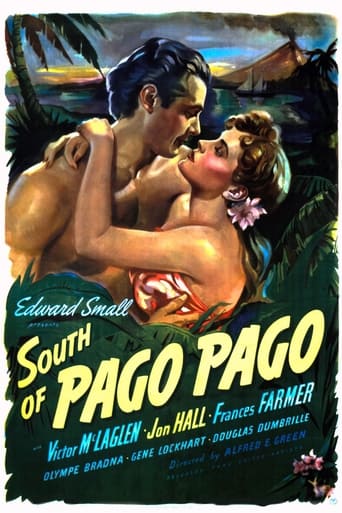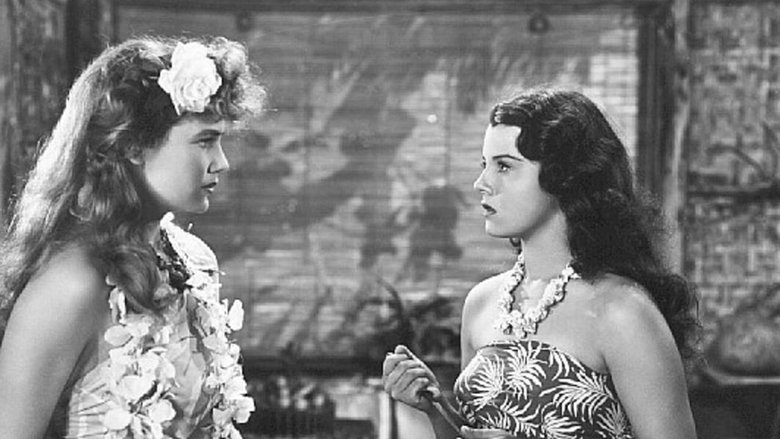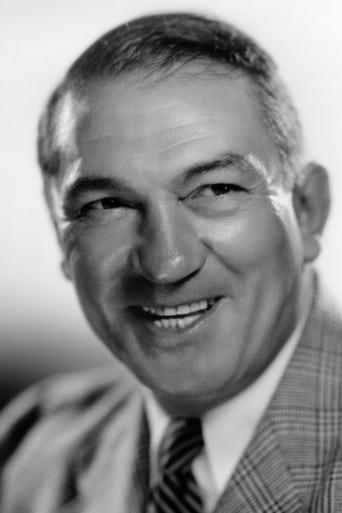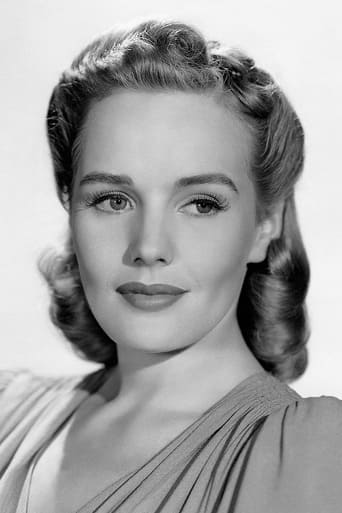

South of Pago Pago (1940)
Sent by cutthroat pirates to turn Kehane’s head while they loot his island paradise of a fortune in pearls, Ruby instead falls for the young chief. Together, the two save Kehane’s people and their island home from the rapacious picaroons but at the tragic cost of their own future together.
Watch Trailer
Cast


Reviews
Save your money for something good and enjoyable
Good movie, but best of all time? Hardly . . .
It's not great by any means, but it's a pretty good movie that didn't leave me filled with regret for investing time in it.
Yo, there's no way for me to review this film without saying, take your *insert ethnicity + "ass" here* to see this film,like now. You have to see it in order to know what you're really messing with.
SOUTH OF PAGO PAGO (United Artists, 1940), an Edward Small Presentation, directed by Alfred E. Green, is a South Seas adventure tale starring Victor McLaglen, Jon Hall and Frances Farmer in the leads. As much as this movie might have started a trend of other South Seas adventures that were common ground during the 1940s, with many produced in lavish Technicolor, this is not the first of this cycle. In 1937 alone, Jon Hall got his first big break in a leading role opposite sarong girl Dorothy Lamour in THE HURRICANE (Samuel Goldwyn) while Frances Farmer was featured in a Technicolor adventure of EBB TIDE (Paramount), based on the novel by Robert Louis Stevenson. Three years later, their paths would meet for this black and white adventure tale with enough island scenery that might have been more effective had it been produced in Technicolor.Opening title: "This is a story of days not so long ago, when Singapore spawned a race of steel-fisted, iron-jawed adventurers, who lived happy, fought hard and died hard - as they ravaged unknown seas, lured by the priceless lusture of virgin pearls." Opening in Shanghai, China, at the Tingle Tangle Café, hostess Ruby Taylor (Frances Farmer) meets with Portuguese sailor, Manuel Forro (Abner Biberman) with news about rich pearl beds that can be found off the shores of Manoa. This news reaches Ruby's friends, Captain Bucko Larson (Victor McLaglen) and his first mate, Williams (Douglass Dumbrille), who invite both Ruby and Manuel aboard their steamer, the L.A. Dessa, bound for the island south of Pago Pago. Before reaching Manoa, Manuel, who's upset about being cheated of his promised share, is thrown overboard to the sharks by Bucko. Greeted by the natives, the crew is met by Kehase (Jon Hall), son of the island chief (Pedro De Cordoba). Although loved by Malia (Olympe Branda) since childhood, Kehase takes an immediate interest in Ruby, a beautiful white woman. Also on the island is Mr. Lindsay (Gene Lockhart), a white man who's been living among the natives for nine years, is not please by the presence by these visitors, which may mean trouble for his happy paradise. His instincts are correct. As the native boys dive for pearls, danger lurks for some, leading to certain deaths or injuries. Kehase insists the pearl diving must stop. Not wanting to leave the island with just twelve pearls to their name, Bucko uses Ruby to lure Kehase away, even to a point of marrying him and honeymooning on the island of Tua Tua. With Kehase temporarily out of the way, Bucko and his mates resume their greedy force amongst the native boys, risking their lives diving for more pearls and turning a once happy community into a fearful one. Also seen in the cast are: Francis Ford (Foster); Ben Weldon (Grimes); and Harry Woods (Black Mike Rafferty).A South Seas tale that plays like a Saturday afternoon matinee is one that has done no harm in Jon Hall's movie career, considering a handful of similar adventures that would follow later on, especially those six over at Universal opposite the exotic Maria Montez. Hall does well as the island leader, but his accented manner of talking fails to come off convincingly. Aside from native drum playing and dancing, shipboard fights pearl diving dangers, the movie also contains off-screen chanting and singing to the title tune of "South of Pago Pago" by Chet Forrest, Bob Wright and Frank Loesser to round out the story. When Frances Farmer makes her first screen entrance in the cafe, her character, clothes and hairstyle strongly resemble that of her Lotta character from her breakthrough film, COME AND GET IT (1936). Once the story shifts towards the island of Manoa, she not only lets her hair down, figuratively, she appears slightly heavier in her physical appearance than before. Olympe Bradna, on loan from Paramount, makes a beautiful island girl. She even participates in a lively island dance with Jon Hall.Not as well known as other films of this type, SOUTH OF PAGO PAGO did become available on VHS through VCI Home Video around 1998, and later onto DVD, assuring its rediscovery. Though cable television broadcasts are uncertain, it was once popular viewing on the late show or afternoon broadcasts during the 1960s and 1970s before taken out or circulation. Overlooking certain outdoor scenes that appear more indoor studio bound, with ordinary scripting, SOUTH OF PAGO PAGO moves swiftly during its 97 minutes of action and adventure. (*** pearls)
Exotic looking adventure of pearl divers in this south seas working for the ruthless Victor McLaglen and the sinister actions of the visiting captain vs. the noble natives. Much of the film focuses on young lovers Jon hall and Olympe Bradne's love being interrupted by the "cloud color skinned" Frances Farmer, a sensual traveler on McLaglen's ship. The peaceful island sees it's first outbursts of violence as the greedy crew under McLaglen turns their world upside down, reminding me of what the native Americans must have thought by the actions of certain Europeans, "Uh oh, there goes the neighborhood!"About as realistic as a Cecil B. DeMille religious epic when it comes to casting, this has to be viewed outside of standard smarts and taken for the delicious, often campy fluff, it is. Hollywood seemed to view native islanders as happy go lucky, friendly hard workers who welcomed visitors without suspicion, and worked hard enough to keep a fresh supply of fish, tropical fruits and sarong materials so they could spend the bulk of the day making love. Every island spot is another example of paradise and every day brings on a new adventure. Bradne's love for Hall is viewed as a juvenile crush after Farmer arrives, and the island elders all speak in wise clichés that the young take seriously without objection. There's no conflict in their life until the arrival of the evil white man. Yet, in spite of all that silliness, there's a bit of a "Lost Horizon" inside this world, an analogy of a peaceful world being interrupted by the arrival of a ruthless leader. Taking into account what was going on in Europe at the time, I'm sure that movie audiences immediately got the connection. This is wisdom disguised in a fluffy, simplistic manner, and I can see the audiences taken in by the moral of the story as well as the beauty. Nearly 80 years later, that message remains as potent as ever, reminding us too of threats of the loss of natural resources and the obsession of wealth and power. Pearls of wisdom a-plenty in this timeless tale.
This movie was an attempt to imitate the success of "The Hurricane" which was made three years earlier also starring Jon Hall as a Tarzan- like South Pacific Islander. Unfortunately, South of Pago Pago was NOT directed by John Ford and it showed.The script is very predictable, the characters are one-dimensional and the acting varies from wooden to hammy. Whereas "The Hurricane" was able to develop a real insight into the soul of the islanders and their way of life, "South of Pago Pago" portrays them too simplistically to ever really identify with.Please watch "The Hurricane" instead.
I can't express how fortiesishly luscious this is on every level. Any fan of that era who hasn't seen it 'ain't there yet.' Frances Farmer ! How could you describe her? [a curiously unblemished saloon girl in this one, but what the heck?] John Hall ! Victor McLaglen ! These people - who they were in the time in which they lived and worked - bigger & more beautiful than life - a part of that never-never fantasy world - that was so much illusion - once lived and so gone forever - of the forties.




